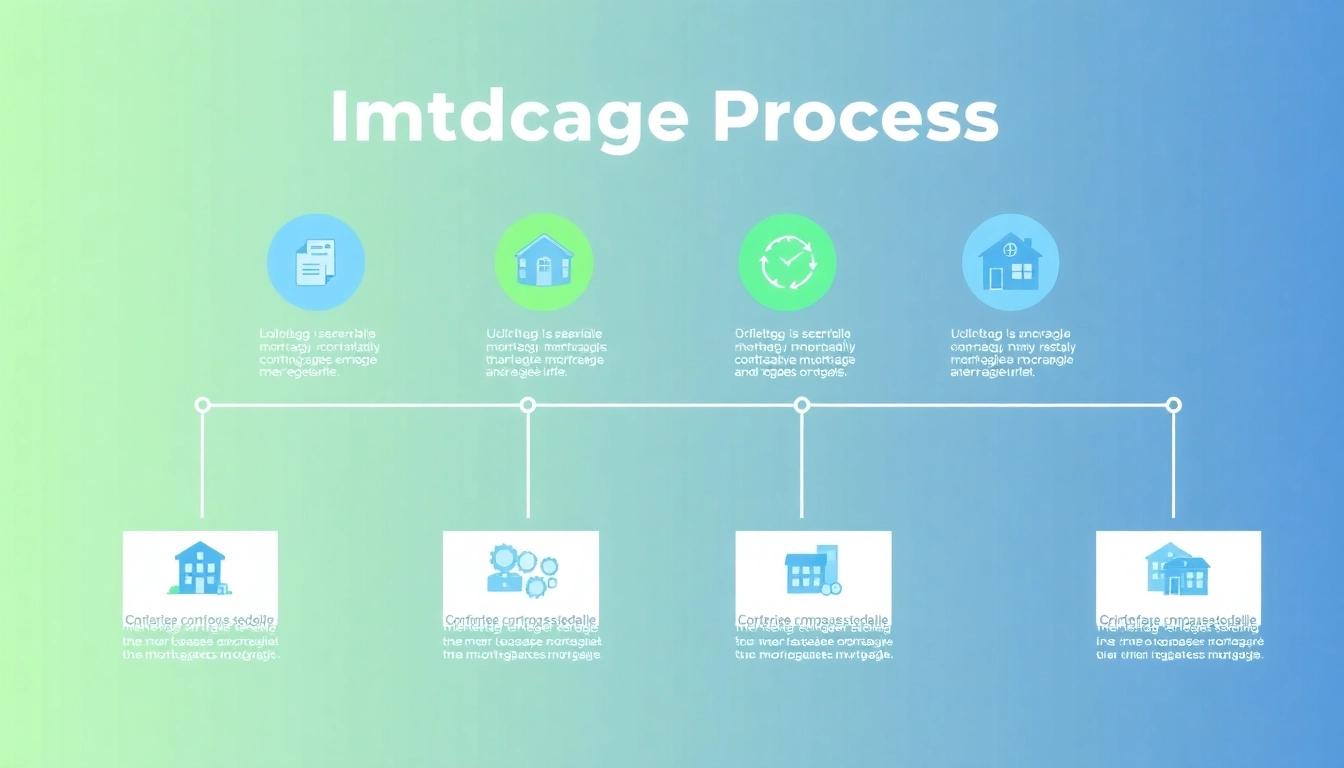Understanding the Mortgage Process for Lenders
The mortgage process can be a complex labyrinth for both borrowers and lenders, but understanding it is essential for the successful execution of real estate transactions. For lenders, clarity in the mortgage process translates to better service delivery and ultimately, increased profitability. This comprehensive guide explores every aspect of the mortgage process for lenders, outlining essential steps, challenges, and best practices. Moreover, you will find actionable insights, case studies, and technological advancements influencing the industry. Engaging with this content can help streamline your operations—essentially mastering the mortgage process for lenders.
What Is the Mortgage Process?
The mortgage process encompasses all steps involved in borrowing money for real estate purchases. Generally, it includes several phases such as pre-approval, application, underwriting, and closing. Each of these steps requires diligence and adherence to regulatory standards, ultimately affecting the lender’s bottom line and customer satisfaction. The process often varies slightly based on the lender’s policies, but all share common elements aimed at assessing borrower capability, risk, and property value.
Key Participants in the Mortgage Process
Understanding who is involved in the mortgage process can provide clarity and insight into the flow of activities. Key participants include:
- Borrowers: Individuals seeking to finance the purchase of a home.
- Lenders: Financial institutions or individuals providing funds for the mortgage.
- Real Estate Agents: Professionals facilitating the buying and selling of properties.
- Appraisers: Certified individuals who assess the property’s value.
- Underwriters: Experts assessing the risk involved in lending money to borrowers.
- Title Companies: Organizations ensuring legal ownership of the property.
Importance of Compliance and Regulations
The mortgage industry is heavily regulated to protect consumers and ensure fair lending practices. Compliance with these regulations is crucial for lenders, as it mitigates legal risks and fosters customer trust. Regulations such as the Truth in Lending Act (TILA) and the Real Estate Settlement Procedures Act (RESPA) govern disclosures and practices throughout the mortgage journey. Lenders need to stay updated on these changes to operate smoothly and ethically.
Steps in the Mortgage Process
Getting Pre-Approved: The First Step
Pre-approval is typically the initial step for borrowers wanting to secure a mortgage. During this phase, lenders assess a borrower’s creditworthiness by evaluating their financial documents. This usually includes income verification, credit scores, and debt-to-income ratios. A pre-approval letter signals to sellers that the borrower is serious and financially capable of proceeding with a purchase, thereby streamlining future negotiations.
Gathering Necessary Documentation
Once pre-approval is obtained, borrowers need to gather comprehensive documentation to facilitate the mortgage application. Essential documents often include:
- Proof of income (pay stubs, W-2 forms, or tax returns)
- Bank statements and asset documentation
- Identification (driver’s license or government ID)
- Detailed information about debts and monthly expenses
This documentation allows lenders to verify the borrower’s fiscal responsibility and readiness for loan commitment.
Choosing the Right Lender
The choice of lender can significantly affect the overall mortgage experience. Borrowers should evaluate potential lenders based on interest rates, service fees, and customer service ratings. A proactive lender who stays communicative throughout the process can alleviate stress for borrowers and promote smoother transactions. Lenders should also focus on understanding the specific needs of each borrower to tailor their offerings and communicate effectively.
Challenges Lenders Face in the Mortgage Process
Common Delays and Issues
Delays are not uncommon in the mortgage process and can arise due to various factors. Common challenges include:
- Slow documentation from borrowers
- Appraisal discrepancies
- Issues related to the title or liens on the property
- Underwriting complications due to credit issues or insufficient documentation
Addressing these issues promptly can prevent costly delays and improve the overall experience.
Mitigating Risks During Processing
Risk mitigation in the mortgage process is essential for lenders. Strategies may include comprehensive borrower education, thorough vetting of applications, and utilizing technology for streamlined processes. Regular communication among all stakeholders can also help in identifying and addressing potential pitfalls early. Utilizing risk assessment tools can enable lenders to evaluate and classify borrowers accurately, ensuring they are aligned with their lending criteria.
Strategies for Smooth Transactions
To enhance the mortgage lending experience, lenders can implement several strategies:
- Clear Communication: Maintaining open lines of communication with borrowers minimizes miscommunications that can lead to delays.
- Consistent Follow-Ups: Regular check-ins help keep transactions on track and demonstrate a commitment to excellent service.
- Utilizing Technology: Tools like CRM systems enable better tracking of applications and may foster customer engagement.
Technological Advancements and the Mortgage Process
How Technology is Changing Lending
Technology is fundamentally transforming the mortgage process by automating and simplifying many tasks. Digital platforms enable smoother workflows, faster approvals, and better overall borrower experiences. Lenders can utilize online applications, e-signatures, and digital document management to enhance efficiency.
Innovative Tools for Lenders
Various tools are available to lenders that can enhance reliability and customer satisfaction, such as:
- Loan Origination Systems (LOS): These platforms streamline the loan application and processing workflow.
- Automated Underwriting Systems: They increase efficiency by quickly assessing risk and eligibility.
- AI-Driven Analytics: Using advanced analytics can help lenders make informed decisions while reducing bias and human error.
Integrating AI into Mortgage Processing
Artificial Intelligence (AI) is becoming increasingly influential in the mortgage process. From automated customer service chatbots to predictive analytics for assessing borrower behavior, AI tools can help lenders identify trends and respond to customer needs proactively. Such integration not only enhances operational efficiency but also allows for more personalized borrower experiences.
Best Practices for a Successful Mortgage Process
Maintaining Communication with Borrowers
Efficient communication is a cornerstone of a successful mortgage process. Lenders should keep borrowers informed through every stage of the application, processing, and closing phases. Tools such as automated email notifications can ensure borrowers are always aware of their application status and any required actions on their part.
Data Analysis for Better Decision Making
Leveraging data analysis can yield significant benefits for lenders. By analyzing past loan performance and borrower demographics, lenders can fine-tune their underwriting processes, risk management procedures, and marketing efforts. Explicit use of data enables lenders to classify risk accurately and make robust lending decisions.
Performance Metrics for Lenders
To gauge success in the mortgage process, lenders should consistently track and evaluate performance metrics such as:
- Average Time to Close: Measuring this can help identify bottlenecks in the process.
- Approval Rates: Understanding the approval rate can shed light on underwriting efficiency and borrower quality.
- Customer Satisfaction Scores: Regular feedback can help inform service improvements and operational refinements.



